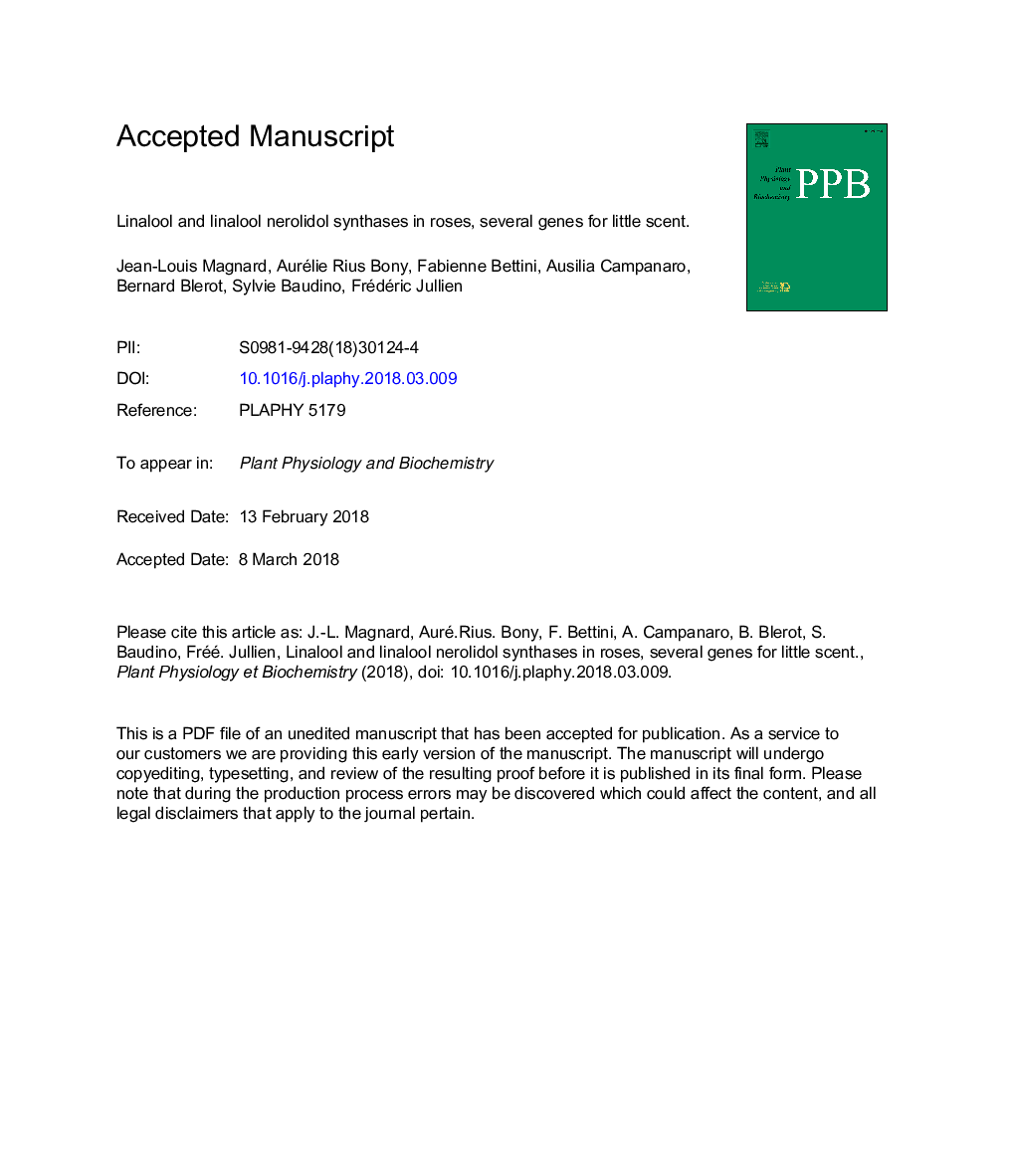| Article ID | Journal | Published Year | Pages | File Type |
|---|---|---|---|---|
| 8352951 | Plant Physiology and Biochemistry | 2018 | 31 Pages |
Abstract
Roses are widely appreciated for the appearance of their flowers and for their fragrance. This latter character results from the combination of different odorant molecules among which monoterpenes are often prevalent constituents. In this study, we report the cloning and characterization of three rose monoterpene synthases. In vitro functional characterization of these enzymes showed that one is a (â)-(3R)-linalool synthase whereas the others have a dual (+)-(3S)-linalool nerolidol synthase activity. However, given that the characterized rose cultivars were only able to produce the (â)-(3R)-linalool stereoisomer, the linalool nerolidol synthases are probably not active in planta. Furthermore, these three enzymes were also characterized by a weak expression level as assessed by RT-qPCR and by the low abundance of the corresponding sequences in an EST library. This characteristic is likely to explain why linalool is generally a minor constituent in rose flowers' scents. On this basis, we propose that in roses the monoterpene biosynthesis effort is focused on the production of acyclic monoterpenes derived from geraniol through the recently characterized Nudix biosynthesis pathway, at the expense of conventional monoterpene biosynthesis via terpene synthases such as linalool or linalool nerolidol synthases.
Keywords
Related Topics
Life Sciences
Agricultural and Biological Sciences
Plant Science
Authors
Jean-Louis Magnard, Aurélie Rius Bony, Fabienne Bettini, Ausilia Campanaro, Bernard Blerot, Sylvie Baudino, Frédéric Jullien,
